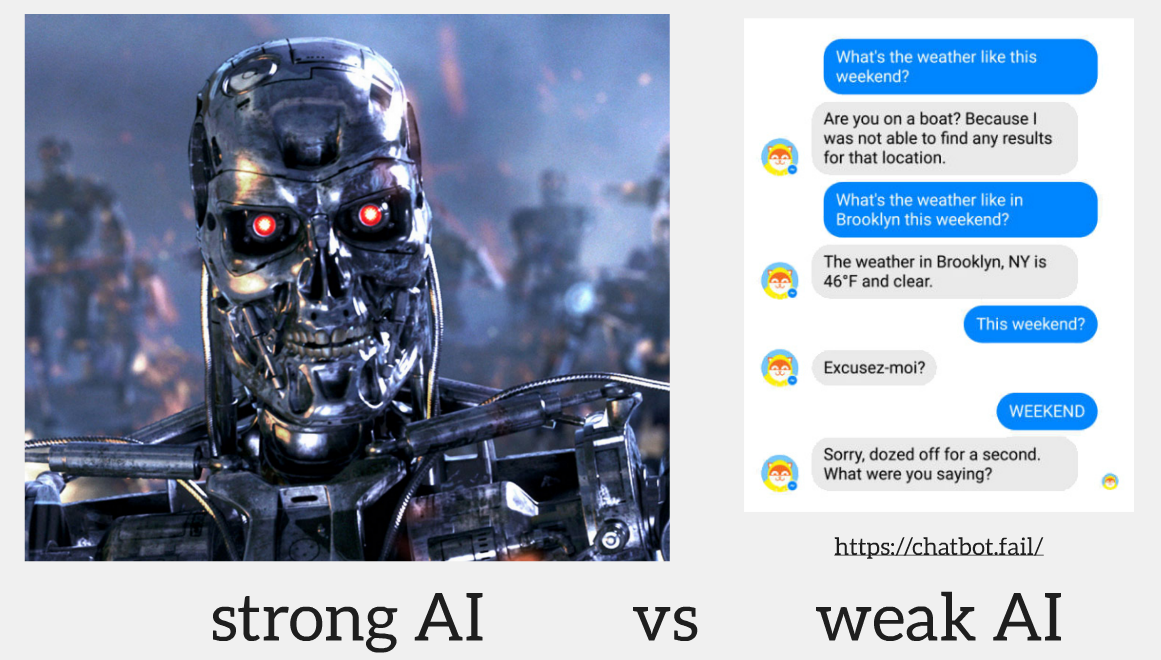Today Chatbots are one of the most prominent examples of AI. Whether you realize it or not, it is more than likely that you have come into contact with a Chatbot. Many social media applications have integrated Chatbots to assist their users. These can be artificially intelligent, but they are usually rule-based, meaning that they can only respond to specific commands. When these distinct commands are inputted by the user, the system is able to produce the correct output depending on the system.

Chatbot Example Graphic – Photo Credit
For the purposes of this blog, we will instead focus on artificial intelligence based Chatbots. These can be integrated with larger platforms or exist separately. I recall that my first interaction with a Chatbot was on Kik. This was roughly 6 years ago. I was riding on the bus home from school when I got a notification from a stranger with a stock photo. I was told not to talk to strangers, but what can I say? I was curious. The bot started the conversation by saying something generic like “Hello.” It asked several random questions and attempted to talk with me as though it was an actual person. However, it was quite obvious that it was not a real person. I would ask questions or answer their inquiries completely wrong and it would not adjust its outputs. As far as Chatbots go it was pretty terrible, but I must commend its creator for their efforts.
Now, Chatbots have significantly developed. Many larger organizations have developed artificial intelligence based Chatbots that are able to take dynamic user inputs and generate unique outputs per the request. These Chatbots work by first tokenizing the user inputs. Language is quite weird and can be ordered and interpreted in many ways. For this reason, a natural language processor is used to break up the input into values that a computer can reorganize and understand. This even involves recognizing key words like names and normalizing the text, by correcting grammar and spelling so that it can be understood. Once this is done parts of speech are assigned and the input is parsed into simpler phrases that can be understood. Once this is completed, the program can output the relevant output to the user.
Depending on the purpose of the system, the output can be very different. Some of the most sophisticated systems are already within our reach. Siri, Alexa, Cortana, and Google Assistant are examples of virtual assistants that utilize Chatbots to better serve their purposes. The Chatbots integrated in these systems allow them to understand what the user is trying to communicate. The other aspects of their systems allow them to calculate and find the appropriate output. However in the majority of these cases, the Chatbots are only acting as assistants and fulfilling minor requests. The conversation is there but limited.

Cortana, Microsoft’s Personal Assistant – Photo Credit
While it is nice to have these personal assistants in our pockets, Chatbots can be used for far more. One new development is that Chatbots can be used as a companion for the elderly, especially for those with Dementia. It will provide these individuals with someone to talk to, which can be especially important if they are alone. Endurance is one of these systems and it is specifically designed to help people with Dementia. It does this by providing them with help as they struggle with their daily routine. Similarly, Chatbots can be used to help people that are unable to sleep. Casper is a new program that is meant to help get insomniacs through the night. Essentially, it provides people with someone to talk to when no one else is awake, or around.

Casper Chatbot – Photo Credit
It is important to understand that Chatbots can be used for more than the applications I outlined above. They are already being used for much more. The list ranges from generating faster medical diagnoses to pure entertainment. I have even heard of creating a suicide prevention system. The list goes on and on. Moving forward, I am certain that Chatbots will be implemented in many different ways and they will only become more prominent.
/cdn.vox-cdn.com/uploads/chorus_image/image/56882573/terminator_endoskeleton_1020.0.jpg)

